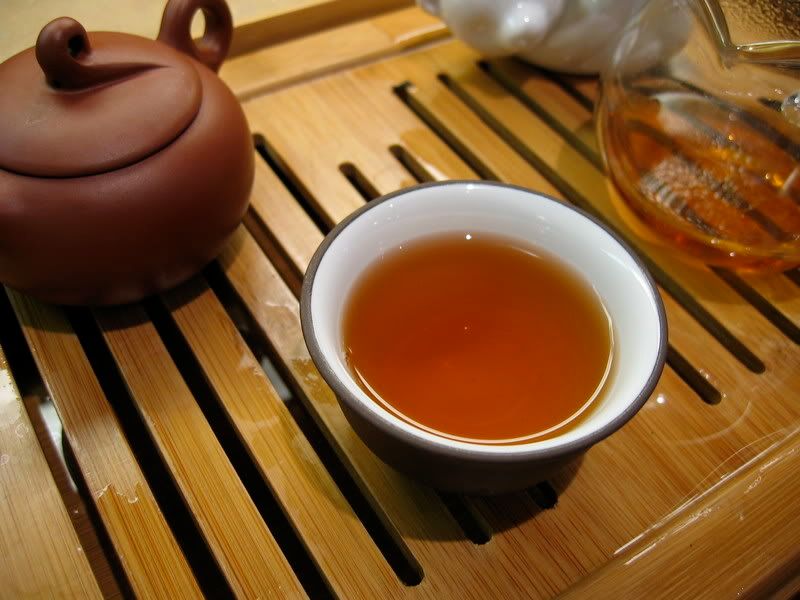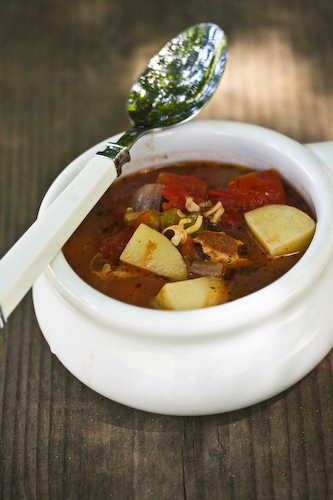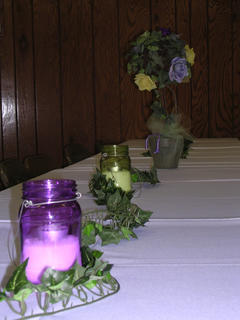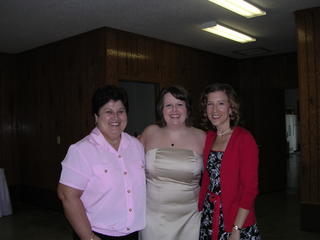Origin: Taiwan
Year: 1980's
Vendor: Hou De Fine Tea
Price: $24.50 (2 oz)
Verdict: 8.5/10
For those who know tea, the word "aged" generally conjures up images of 40 year old raw puerh cakes. Puerh ages due to microbial activity within the cakes, so it is an active, biological process. Oolong teas, on the other hand, do not contain these microbes, which is why I was confused when I first heard of aged oolong. I don't know the science behind aging oolong tea, but the process involves air-tight storage and roasting every few years. From what I understand, the time mellows the tea and the roasting wakes it up again, keeping it from simply going stale.
Unfortunately this tea is no longer available, so I suppose this review is a bit useless to you, the reader. Lucky for you I have no qualms about being useless.
 Dry Leaf:
Dry Leaf:As you can see, this looks very much like Wuyi rock oolong (at least to me), and very little like a fresh baozong, except for the wiry shape. The small, twisty, dark brown leaves have quite an interesting aroma. Unlike the cocoa/charcoal aroma one often finds in Wuyi oolongs, this is much smoother, more like solid dark chocolate. I also noted some caramel and cherries, though I must credit the latter observation to Salsero, without whose help I never would have figured it out. There are no upfront or aggressive aromas, which would normally leave the tea a bit flat, but for whatever reason it seems to give the bouquet an added depth. It is an inexplicable depth though, since I honestly can't say it's an exciting aroma. On the contrary, it is quite muted-- I wonder if another roasting would turn up the volume, per se.
Parameters:4.3g dry leaf; 90mL yixing teapot; off-boiling tap water; Rinse, 23s, 30s, 27s, 27s, 32s, 34s, 39s, 38s, 39s, 47s
Liquor:
This was a nice, dark flavored dessert kind of tea. Not necessarily dark in color, as you can see, but dark in flavor, with a consistent blend of smooth dark chocolate and red berries. I picked up almost no smokiness whatsoever, which was unexpected because of all the roasting this tea has experienced. Though the aroma had hints of cherries (thanks again Sal), I thought the
flavor was more raspberry-like in the first infusions and strawberry-like in the end. The tea was relatively unchanging in flavor, except for a slight change in emphasis from chocolate in the beginning to berries with a sugary/vanilla sweetness in the end. This was not a particularly thick-feeling tea, but it did give a nice coating sensation in the early infusions. Overall, quite tasty, but no real surprises.
I also thought I'd mention another observation I made. Some of you may have heard of "cha qi." I have
no idea what it is supposed to feel like, and frankly I'm hesitant to put much stock in the concept of qi. Nevertheless, there is no better explanation at this time that I am aware of, so I'll stick with it for now. Anyway, the observation I made was a sweeping sense of warmth, starting in my sinuses, sweeping up to my forehead, and then flowing down the back of my neck and ending in my chest/upper back. It was quite nice, but I'm not sure if it was the tea, or some combination of the hot weather and my imagination.
 Wet Leaves:
Wet Leaves:Stiff leaves (arthritic, perhaps?), and dark brown color throughout. Unlike relatively young Wuyi oolongs which are dark green/brown when unrolled, these are all brown, likely due to a combination of age and repeated roastings. [Sorry about the bad picture, by the way]
Conclusion:This tea reminded me of the Energizer bunny in two ways. First, it keeps going and going. This tea easily lasted 9 infusions, when it just started showing signs of weakness. Second, you feel funny after you drink what's inside. I don't usually get disoriented or "tea drunk" until I've had a lot of tea, but one session of this stuff made me feel positively loopy.
***Disclaimer: Don't eat batteries.***
Overall, I have to say I was quite pleased by this tea. I will certainly miss it when it's gone. Perhaps it isn't the most engaging tea I've had, but it is interesting enough to keep my attention without requiring it. Overall, this gets an
8.5/10.
Also see Hobbes' review of this tea.
Taken from http://teanerd.blogspot.com/











 It is no small feat to pick two cups of yellow violet blossoms. They are tiny, delicate, and do not grow in clusters of blossoms. So, one by one, I picked the precious little bits of gold and put them in a secure zip-lock bag. The entire time, I kept one ear and eye tuned to the woods around me (and I didn't wander far away from the fence builder!) so that I could be aware and alert for wild animals like cougars and bears. Coco was my companion and together we enjoyed a yellow violet collecting walk through the woods. At first I used scissors to snip, but found it quicker and faster to bend and pinch with my fingers. By afternoon's end I decided there was enough for a cooking project and put the bags in the ice chest to stay cool.
It is no small feat to pick two cups of yellow violet blossoms. They are tiny, delicate, and do not grow in clusters of blossoms. So, one by one, I picked the precious little bits of gold and put them in a secure zip-lock bag. The entire time, I kept one ear and eye tuned to the woods around me (and I didn't wander far away from the fence builder!) so that I could be aware and alert for wild animals like cougars and bears. Coco was my companion and together we enjoyed a yellow violet collecting walk through the woods. At first I used scissors to snip, but found it quicker and faster to bend and pinch with my fingers. By afternoon's end I decided there was enough for a cooking project and put the bags in the ice chest to stay cool. Of course it was late when we arrived back home, and I was not in the mood to stay up and make violet syrup! To protect the delicate blossoms, I placed them in quart jars and filled them with water. Once lidded, they were placed in the refrigerator so they cold stay fresh and cool.
Of course it was late when we arrived back home, and I was not in the mood to stay up and make violet syrup! To protect the delicate blossoms, I placed them in quart jars and filled them with water. Once lidded, they were placed in the refrigerator so they cold stay fresh and cool. The next morning, after reading a variety of violet syrup recipes, I sent out an SOS to Clarice at Storybook Woods (she's an expert at rose syrup). She gave me a quick phone call (well, it wasn't really quick --- we enjoyed a lovely chat) and we consulted about the best formula options and techniques for delicate floral syrups.
The next morning, after reading a variety of violet syrup recipes, I sent out an SOS to Clarice at Storybook Woods (she's an expert at rose syrup). She gave me a quick phone call (well, it wasn't really quick --- we enjoyed a lovely chat) and we consulted about the best formula options and techniques for delicate floral syrups.


 Britain is big on tradition, from the changing of the guard at Buckingham Palace (I can still remember seeing the soldiers going through the same carefully laid-out movements that they had done for decades) to their breakfast. Cereals play a big part, as they have for about as long as those guards have been changing.
Britain is big on tradition, from the changing of the guard at Buckingham Palace (I can still remember seeing the soldiers going through the same carefully laid-out movements that they had done for decades) to their breakfast. Cereals play a big part, as they have for about as long as those guards have been changing.


 “What’s a tea station?” you query. Good question. Thought you’d never ask.
“What’s a tea station?” you query. Good question. Thought you’d never ask.


 Dry Leaf:
Dry Leaf: This was a nice, dark flavored dessert kind of tea. Not necessarily dark in color, as you can see, but dark in flavor, with a consistent blend of smooth dark chocolate and red berries. I picked up almost no smokiness whatsoever, which was unexpected because of all the roasting this tea has experienced. Though the aroma had hints of cherries (thanks again Sal), I thought the
This was a nice, dark flavored dessert kind of tea. Not necessarily dark in color, as you can see, but dark in flavor, with a consistent blend of smooth dark chocolate and red berries. I picked up almost no smokiness whatsoever, which was unexpected because of all the roasting this tea has experienced. Though the aroma had hints of cherries (thanks again Sal), I thought the  Wet Leaves:
Wet Leaves:

 Out with the old and in with the new — year, that is! Try something different to toast in that new year: the champagne of teas — Darjeeling. Don’t forget the feast to go with it. Get the details on The Taste of English Tea Blog.
Out with the old and in with the new — year, that is! Try something different to toast in that new year: the champagne of teas — Darjeeling. Don’t forget the feast to go with it. Get the details on The Taste of English Tea Blog.
 getaway trip to San Francisco, hoping that the fresh ocean air and Union Square shopping would help clear my head. When all else failed, we got cozy with Manhattans at the Clock Bar, and then treated ourselves to a well-deserved mid-afternoon nap.
getaway trip to San Francisco, hoping that the fresh ocean air and Union Square shopping would help clear my head. When all else failed, we got cozy with Manhattans at the Clock Bar, and then treated ourselves to a well-deserved mid-afternoon nap.














